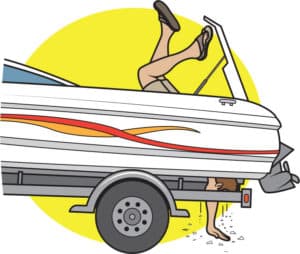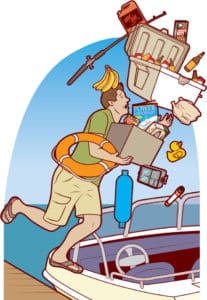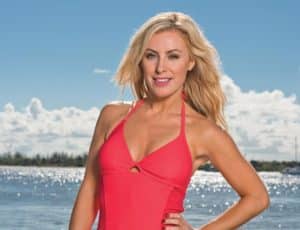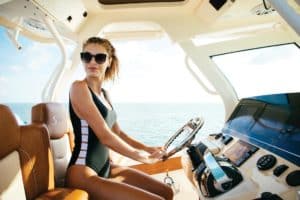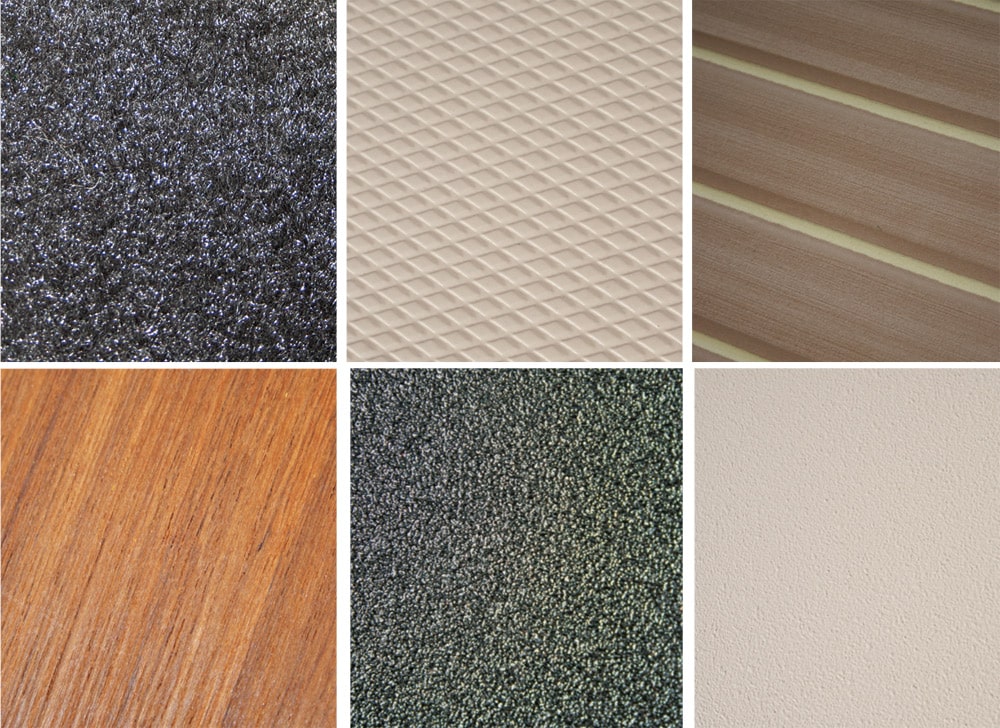
Choosing the Best Nonskid Surface
Top 8 countdown of what’s got grip and what might slip.
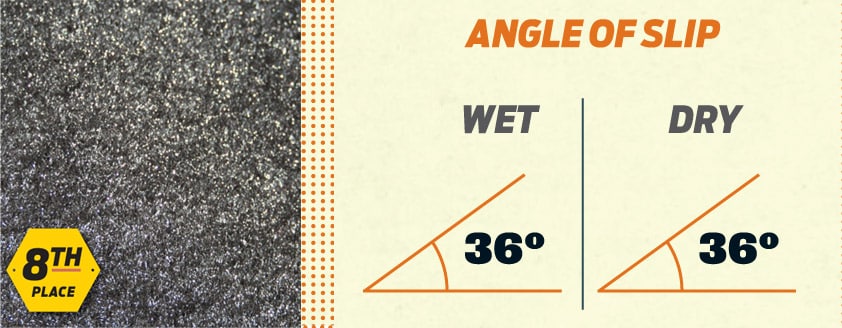
Choosing the Best Nonskid Surface
While we had expected boat carpet to offer better traction than most, it was actually the least grippy of any of the deck coverings. The good news is that water does not seem to degrade its mediocre nonskid qualities. Our deck shoe held up to the same angle whether pile carpeting was dry or soggy. Comments
Most of the water stayed put rather than running off when the angle of the ramp was increased. If you want a carpeted deck, opt for snap-in that’s easy to pull out and dry, or buy a wet-dry shop vacuum. Pros
Boat carpet retains its nonskid qualities when the deck gets wet. Cons
Carpeting is slow to dry, leading to wet feet and greater chance of slipping elsewhere.
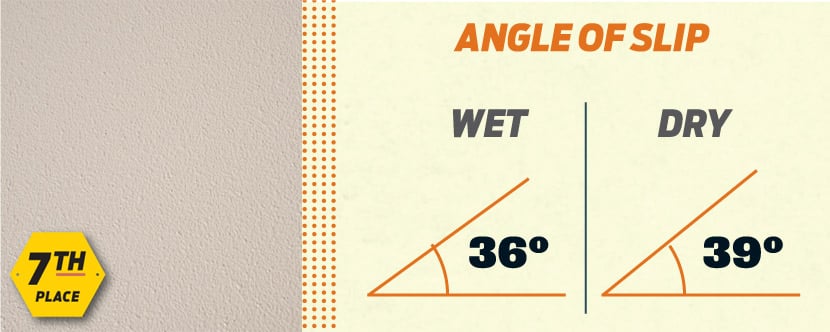
Choosing the Best Nonskid Surface
Fiberglass grit-style nonskid offers good traction when dry but loses some grip when wet. While most of the water beaded up and ran off quickly as we increased the angle, the texture retained some water, and we believe this led to the reduced grip in our wet test of this surface. Comments
To confirm these results, we tested fiberglass grit-style nonskid surfaces from other sources, but we found that Grady-White offers the best grip, if not the most gritty texture, in this category. Pros
When dry, this surface offers just as much traction as diamond nonskid. Cons
A tendency to hold minute amounts of moisture leads to loss of traction when wet.
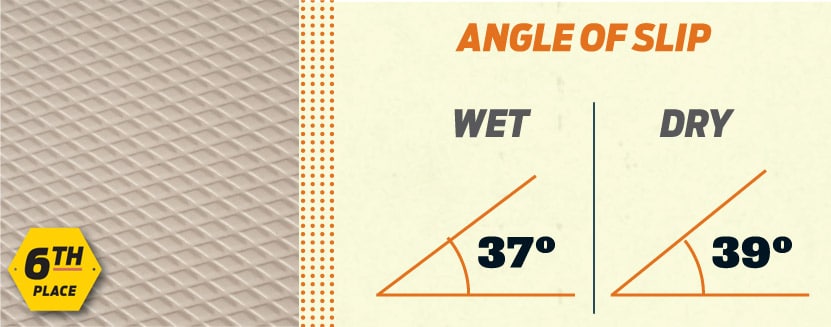
Choosing the Best Nonskid Surface
The diamond-pattern fiberglass sole in our comparison displayed good traction while dry, and it lost a little grip when wet. Most of the water ran off quickly, with the rest collecting in the tiny channels in the pattern, leaving the raised diamonds largely dry and ready to grab. Comments
We also cross-checked these results against other diamond patterns and found this one — used by Grady-White — provided the best traction. The lesson here: Not all diamond patterns are created equal. Pros
When new, this nonskid offers good traction whether it’s wet or dry. Cons
Nonskid qualities will degrade with age as the deck wears from use and scrubbing.
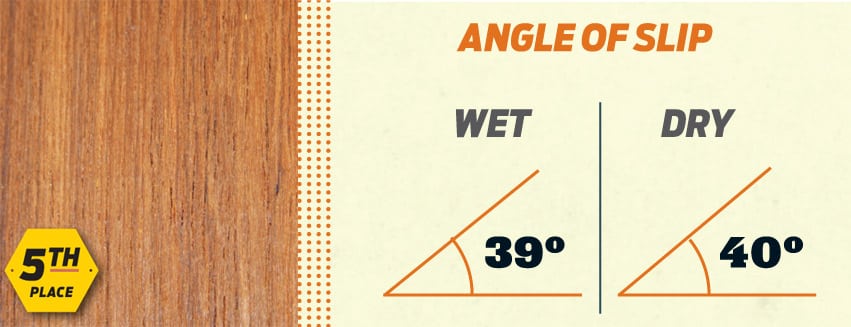
Choosing the Best Nonskid Surface
Tested with the grain running parallel to the ramp, a sheet of untreated teak proved to offer better traction than both types of the fiberglass textures, as well as the carpet, in our comparison. While much of the water ran off, the wood remained damp, degrading traction in the wet test. Comments
When completely dry, teak lives up to its old-school reputation for grip. However, when traversing a damp deck in the same direction as the grain, you can’t count on the same traction. Pros
Even when wet, teak offers the same degree of traction as either fiberglass nonskid. Cons
Untreated teak tends to take longer to dry than fiberglass nonskid or faux teak.
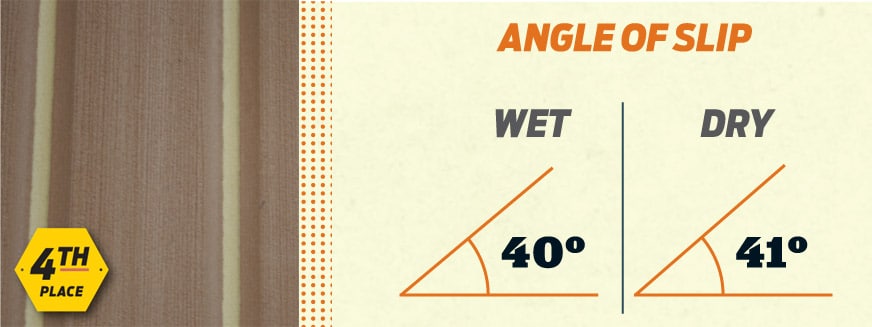
Choosing the Best Nonskid Surface
To get a complete picture, we tested a sample of SeaDek faux teak two ways — with the grain and across it. The grain and simulated caulking channels are machine-cut. Our first test going with the grain was impressive. SeaDek maintained a strong grip when wet. Comments
The EVA foam decking material shed almost all of the water immediately as the incline increased, absorbing none of the moisture. Traction was only slightly degraded in the wet test. Pros
Very grippy wet or dry, with the added benefit of foam cushioning underfoot. Cons
Caulking channels can collect dirt, fish scales and other gunk if not cleaned properly.
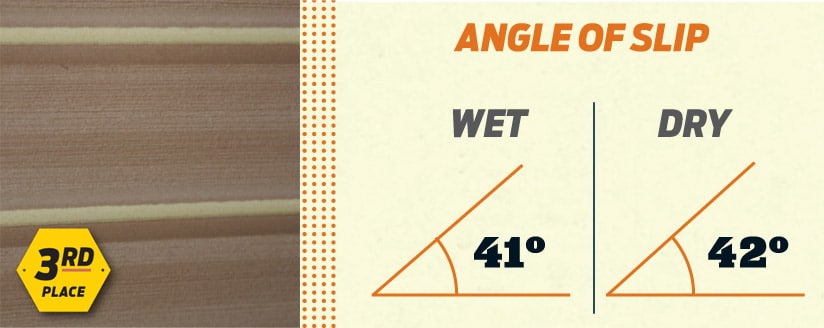
Choosing the Best Nonskid Surface
Traction improved even further in our tests of SeaDek across the manufactured grain. The edges of caulking grooves, which ran crosswise to the ramp in this trial, might have also contributed to better traction. When wet, SeaDek lost very little of its grip. Comments
While the simulated planking shed water quickly, half-inch caulking grooves held pockets of water, which gradually emptied as the ramp angle increased. However, this did not seriously degrade traction. Pros
Traction of this EVA foam material is good, but it grips even more across the grain. Cons
Water collects in the caulking grooves, so drainage needs to be carefully considered.
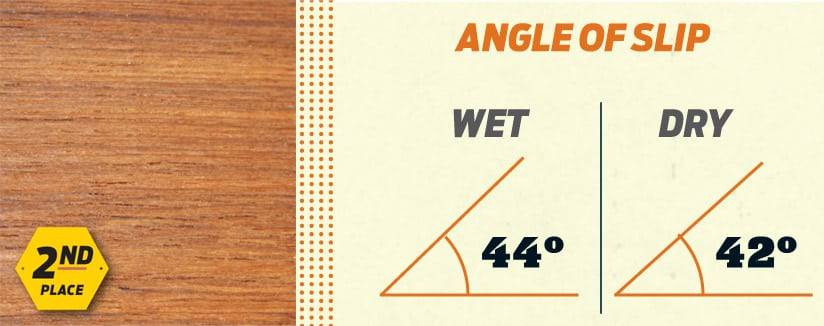
Choosing the Best Nonskid Surface
As with SeaDek, we retested teak across the grain. While offering impressive traction when dry, it was the only surface that became more grippy when wet. We believe this is because moisture raises the grain of the wood, creating cross-ridges of nonskid. Comments
The salty assertion that teak is the best nonskid sole holds some water (excuse the pun). While traction proved very good overall, it was outstanding when measured across the grain while wet. Pros
This is the only nonskid material that offers improved traction when it’s wet. Cons
Teak decks are heavy and expensive, making them best suited for larger boats.
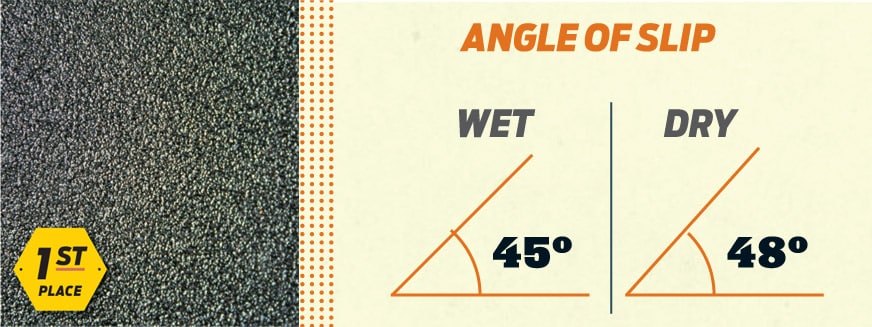
Choosing the Best Nonskid Surface
3M set out to create the best traction possible — largely for industrial applications — and it succeeded with this grip tape. More popular among skateboarders than among boaters, this material offered extremely good traction. Even wet, it had better grip than any other material in the group. Comments
3M is known for the ultimate — as in 3M 5200 series — sealant. Safety-Walk 700 series carries this philosophy into the genre of nonskid. It offers extremely strong grip whether it’s wet or dry. Pros
Available in a variety of widths and lengths, this peel-and-stick material is easy to apply. Cons
The tape begins to peel up at the corners after a year or two of use, requiring replacement.

